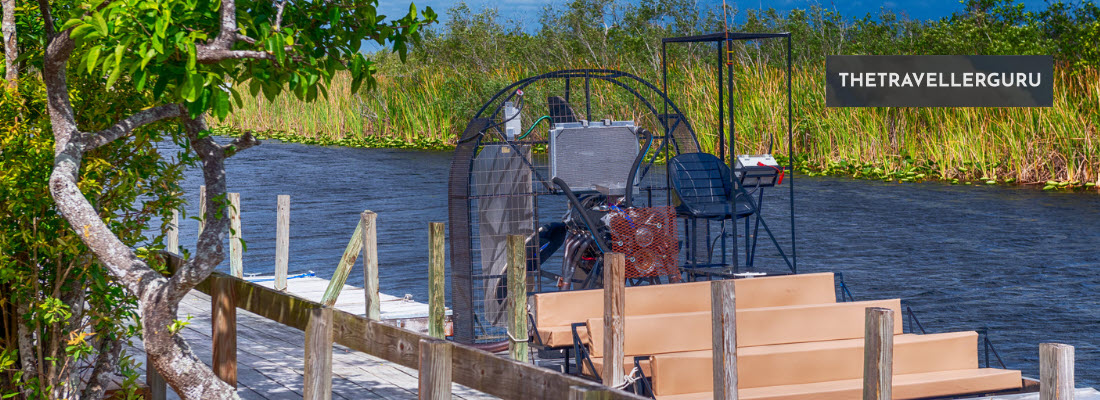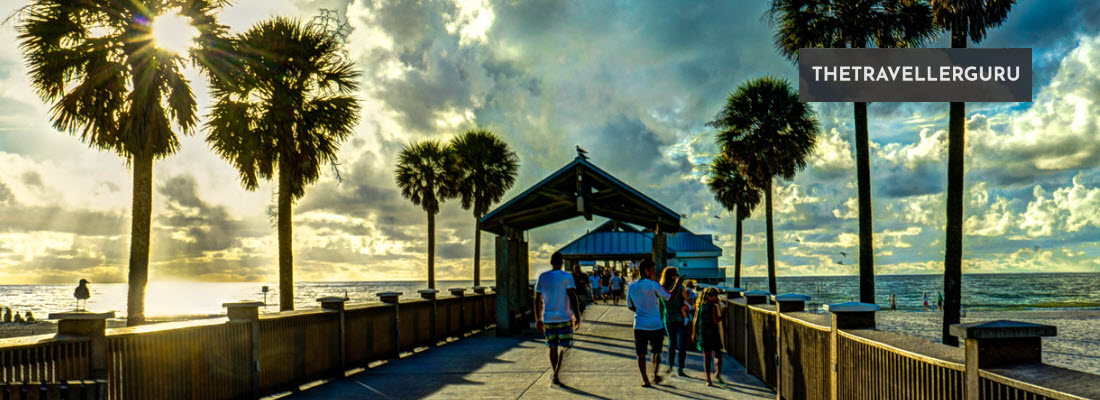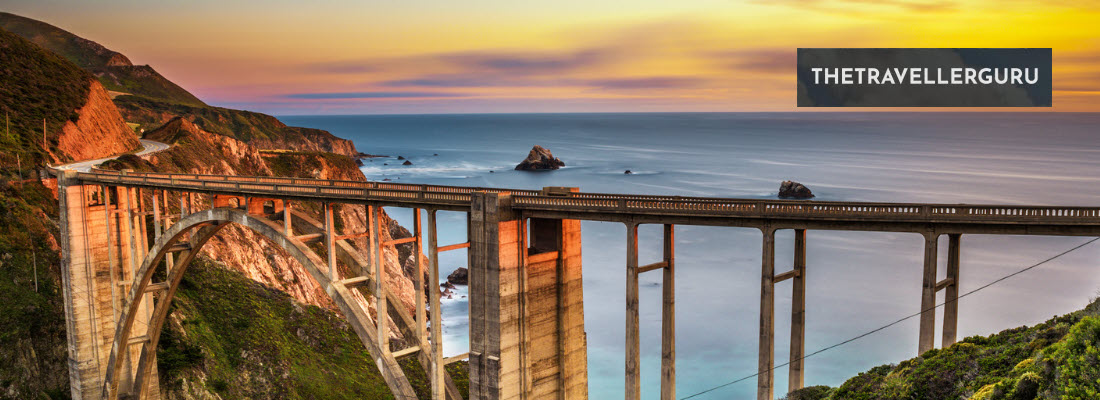Hey there my traveling adventurers and welcome to my post where we will check out my 7 best national parks in Florida this year. Florida’s national parks boast an array of unique ecosystems and natural beauty that draw visitors from all over the world. From the sprawling wetlands of the Everglades to the underwater wonders of Biscayne National Park, these protected areas offer a glimpse into diverse habitats and a range of recreational activities.
Understanding the distinct features of each park, including their ecosystems, history and the wildlife that inhabits them, is essential for planning a visit. Information about park fees, regulations and seasons can enhance the visit, ensuring that travelers make the most of their experience while respecting the natural and cultural resources Florida’s national parks are known to protect.
- Everglades National Park
- Dry Tortugas National Park
- Biscayne National Park
- Apalachicola National Forest
- Big Cypress National Preserve
- Point Washington State Forest
- Silver Springs State Park
Map Of Florida’s Best National Parks
Use the map below to find the locations of the best national parks Florida has to offer:
Best National Parks in Florida
Florida boasts some of the most unique and biodiverse national parks in the United States. Each park offers a unique experience, from underwater marvels to vast subtropical wilderness. Here is an outline of the best of them:
1. Everglades National Park
Everglades National Park is a remarkable natural treasure located in the southern tip of Florida. This vast park, covering 1.5 million acres is a mosaic of freshwater and saltwater ecosystems including sawgrass marshes, mangrove forests and pine flatwoods.
It’s also home to an incredible diversity of wildlife including several endangered species that offers visitors a unique glimpse into a delicate ecosystem unlike any other in the world.
Access Requirements
- Entrance Fees: The park charges an entrance fee, which varies depending on the mode of entry — vehicle, motorcycle or pedestrian. An annual pass is also available for those planning multiple visits. Click here for current costs.
- Permits: Certain activities in the Everglades require permits such as backcountry camping and fishing. These permits are designed to protect both the park’s natural resources and its visitors.
- Operating Hours: Everglades National Park is open 24 hours a day, year-round. However visitor center hours, entrance station hours and certain services may vary by season.
Location
The Everglades National Park is located in southern Florida, with entrances accessible from Homestead, Everglades City and Shark Valley. The main entrance in Homestead leads to the Royal Palm and Flamingo areas, offering access to a variety of trails, visitor centers and services.
- How to Get There: The park is accessible by car from Miami, taking approximately 1.5 hours to reach the main entrance near Homestead. The nearest airports are in Miami and Fort Lauderdale, with car rental options available for the drive to the park as well.
Things to Do
- Wildlife Viewing: The Everglades is a haven for wildlife enthusiasts with the Anhinga Trail and Shark Valley offering excellent opportunities for viewing alligators, wading birds and possibly the elusive Florida panther.
- Hiking and Biking Trails: Explore the park’s diverse landscapes on foot or by bike. The Shark Valley Tram Road is a popular biking route, offering a flat, easy ride with plenty of wildlife viewing opportunities.
- Boat Tours and Kayaking: Guided boat tours and kayak rentals allow visitors to explore the park’s waterways, offering a closer look at its aquatic ecosystems and inhabitants.
- Fishing and Camping: The park offers freshwater and saltwater fishing, with specific regulations in place to protect its ecosystems. Campgrounds are available for both tent and RV camping, with reservations recommended during the peak season.
Nearby Accommodation
- Inside the Park: The Flamingo and Long Pine Key campgrounds offer accommodations ranging from tent sites to RV hookups. Advance reservations are recommended, especially during the winter months.
- Outside the Park: A variety of accommodations can be found in nearby communities such as Homestead, Florida City and Everglades City, ranging from hotels and motels to bed and breakfasts.
- Eco-friendly Options: Several lodgings outside the park focus on sustainability, offering eco-friendly accommodations that minimize environmental impact.
Remember to plan your visit with respect for the natural environment and the diverse species that call the park home, ensuring this treasure remains preserved for generations to come.
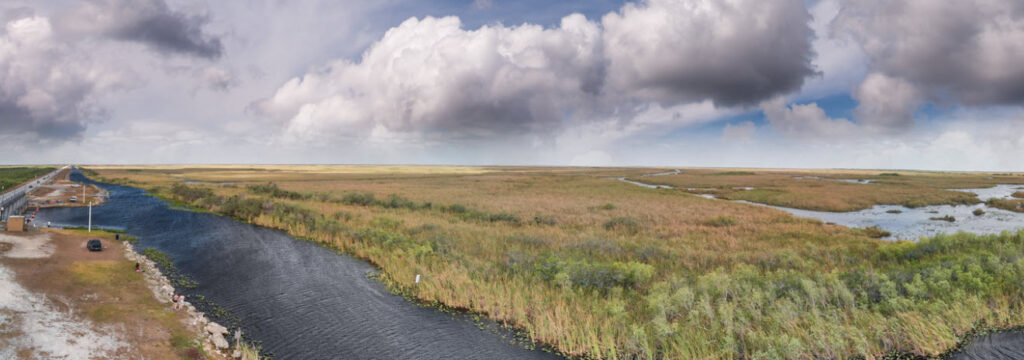
Check out these: 7 Best Road Trips in Florida
2. Dry Tortugas National Park
Dry Tortugas National Park is a remote paradise located in the Gulf of Mexico, about 70 miles west of Key West. Comprising seven small islands and famous for its crystal-clear waters, coral reefs, marine life and the historic Fort Jefferson, the park is accessible only by boat or seaplane.
This secluded haven offers visitors a unique blend of natural beauty and historical significance, making it an ideal destination for those looking to explore pristine coral reefs, enjoy bird watching or delve into the rich past of one of America’s most impressive 19th-century forts.
Access Requirements
- Entrance Fees: There is an entrance fee for Dry Tortugas National Park, which covers visitors for seven consecutive days. Fees vary for those arriving via private boat or ferry/seaplane services, which typically include the park entrance fee in their ticket prices. Click here for current entrance fee pricing.
- Permits: Special use permits may be required for certain activities such as overnight camping on Garden Key.
- Operating Hours: The park is open 24 hours a day, year-round however transportation options (ferry and seaplane) operate during daylight hours and have specific schedules.
Location
Dry Tortugas National Park is located in the Gulf of Mexico, west of Key West, Florida. The park is renowned for its isolation and the incredible clarity of its surrounding waters.
- How to Get There: Access to the park is primarily through ferry services, private boats or seaplane trips from Key West. The Yankee Freedom III is the official ferry service to the park offering daily trips and seaplane services provide shorter travel times and aerial views of the park.
Things to Do
- Snorkeling and Diving: The park’s vibrant coral reefs and shipwrecks make it a premier destination for snorkeling and diving. Snorkeling gear is often provided by ferry services and the clear waters offer excellent visibility to explore the underwater world.
- Bird Watching: Dry Tortugas is a crucial habitat for thousands of seabirds, making it a fantastic location for bird watching, especially during migration seasons.
- Exploring Fort Jefferson: Visitors can explore the largest brick masonry structure in the Americas, learning about its history as a prison during the Civil War and its strategic military importance.
- Camping: Limited camping is available on Garden Key on a first-come, first-served basis, offering a unique opportunity to experience the park’s natural beauty overnight.
Nearby Accommodation
- Inside the Park: The park offers a primitive camping experience on Garden Key, with a limited number of campsites. Campers must bring all necessary supplies as there are no services or provisions available.
- Outside the Park: Accommodations are not available directly within the park besides camping. Visitors typically stay in Key West, where a wide range of hotels, bed and breakfasts and vacation rentals are available to suit various budgets and preferences.
- Eco-friendly Options: Key West and its surrounding areas offer several eco-friendly lodging options for those looking to minimize their environmental impact while exploring the Dry Tortugas and the Florida Keys.
Dry Tortugas National Park is a unique and breathtaking destination that offers an escape into nature’s untouched beauty and a journey through American history. Whether you’re snorkeling, bird watching, exploring the historic Fort Jefferson, or simply enjoying the serene beaches, Dry Tortugas provides an unforgettable experience far removed from the hustle and bustle of daily life.
Check out these: Best Campsites in Florida
3. Biscayne National Park
Biscayne National Park, located in southern Florida, is a rare jewel that showcases the beauty of the marine environment. Covering over 172,000 acres, 95% of which is water, the park is renowned for its vibrant coral reefs, an array of marine life, mangrove forests and a handful of small islands.
This unique national park offers visitors the chance to explore its underwater wonders through snorkeling, diving and boating whilst also providing a glimpse into the area’s rich history and cultural heritage, including shipwrecks and the picturesque Boca Chita Key lighthouse.
Access Requirements
- Entrance Fees: There is no entrance fee for Biscayne National Park, making it accessible to all visitors.
- Permits: While general access to the park is free, certain activities such as camping on Boca Chita Key and Elliott Key require permits and fees. Special use permits may also be needed for events or activities.
- Operating Hours: The park is open 24 hours a day, year-round. However, the Dante Fascell Visitor Center has specific operating hours, typically from 9:00 AM to 5:00 PM daily.
Location
Biscayne National Park is located just south of Miami, along the coast of southern Florida. It encompasses the northernmost group of living coral reefs in the United States and includes several keys (islands), the most notable being Boca Chita Key, Elliott Key and Adams Key.
- How to Get There: The park’s main gateway is through the Dante Fascell Visitor Center, located at Convoy Point, approximately 9 miles east of Homestead, Florida. Access to the park’s islands is primarily by boat, with options ranging from private boats to guided tours and ranger-led programs.
Things to Do
- Snorkeling and Diving: Explore the park’s stunning coral reefs and underwater shipwrecks, which are teeming with marine life. Guided snorkeling and diving tours are available as well offering visitors a chance to see the park’s underwater beauty up close.
- Boating and Kayaking: With most of the park being water, boating and kayaking are popular activities. Visitors can bring their own boats, rent kayaks or join guided boat tours to explore the mangrove-lined shores and open waters of the park.
- Fishing: Biscayne National Park offers excellent opportunities for fishing, with regulations in place to protect the park’s natural resources. A Florida fishing license may be required.
- Camping: Overnight camping is available on Boca Chita Key and Elliott Key, providing a unique way to experience the park’s natural beauty. Reservations and permits are required.
Nearby Accommodation
- Inside the Park: Camping is the primary form of accommodation within the park and the campsites on Boca Chita Key and Elliott Key offer basic amenities including picnic tables and grills, but campers must bring all necessary supplies.
- Outside the Park: A wide range of accommodations can be found in nearby Homestead and Florida City, from hotels and motels to bed and breakfasts, catering to different budgets and preferences. These locations provide easy access to the park as well as other attractions in the area.
- Eco-friendly Options: Several accommodations in the Homestead and Florida City area focus on sustainability, offering eco-friendly lodging options for environmentally conscious travelers.
Biscayne National Park offers a unique blend of aquatic and terrestrial experiences, set against the backdrop of its stunning marine ecosystem. Whether you’re diving into the clear waters to explore coral reefs, paddling through peaceful mangrove forests, fishing, or simply enjoying the tranquility of a sunset over the bay, Biscayne provides an array of activities that connect visitors with the natural world. With its close proximity to Miami, yet a world away in terms of its serene and pristine environment, Biscayne National Park is a must-visit destination for nature lovers and adventure seekers alike.
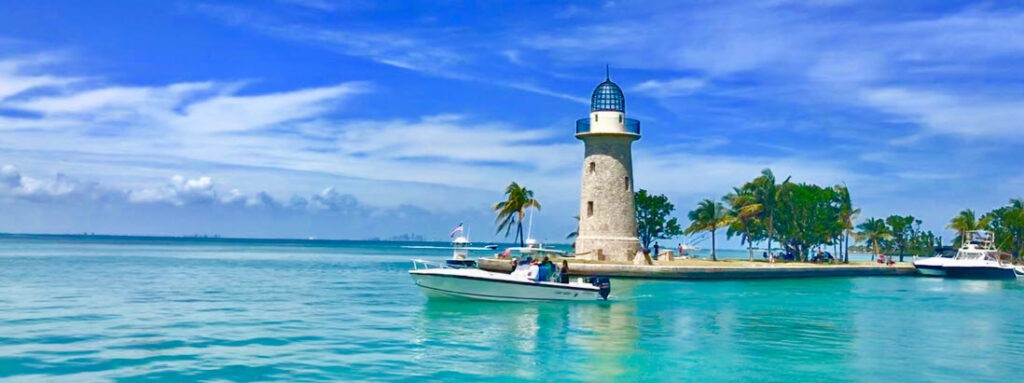
4. Apalachicola National Forest
The Apalachicola National Forest, located in the Florida Panhandle, is the largest U.S. National Forest in the state of Florida, covering over 632,000 acres. This vast expanse of nature is a haven for outdoor enthusiasts offering a diverse range of ecosystems from pine flatwoods to cypress swamps and is home to a rich variety of wildlife including the endangered red-cockaded woodpecker and the Florida panther.
The forest provides a multitude of recreational opportunities from hiking and biking to fishing and hunting, making it an ideal destination for those seeking adventure or a peaceful retreat into nature.
Access Requirements
- Entrance Fees: There are no entrance fees for the Apalachicola National Forest, making it freely accessible to the public.
- Permits: Certain activities within the forest may require permits such as camping in designated campgrounds, hunting and fishing. These permits are necessary to ensure the conservation of the forest’s natural resources and to manage visitor use.
- Operating Hours: The forest is open year-round, 24 hours a day although specific areas and facilities, such as campgrounds and recreational areas, may have different operating hours or seasons.
Location
The Apalachicola National Forest is situated in the Florida Panhandle, west of Tallahassee, the state’s capital. It spans several counties including Franklin, Leon, Liberty and Wakulla offering a wide range of natural landscapes and outdoor activities.
- How to Get There: The forest is easily accessible by car from Tallahassee and surrounding areas. Major access points include State Roads 65, 267 and U.S. Highway 319, providing direct routes into different parts of the forest.
Things to Do
- Hiking and Biking: The forest boasts an extensive network of trails including the Florida National Scenic Trail, which offers miles of hiking through diverse ecosystems. Mountain biking is also popular on designated trails.
- Fishing and Hunting: With numerous lakes, rivers and streams, the Apalachicola National Forest is a prime spot for freshwater fishing and hunting with appropriate licenses and permits.
- Camping: Various campgrounds within the forest cater to different preferences from primitive camping sites to those with more amenities such as restrooms and picnic tables.
- Wildlife Viewing: The forest’s diverse habitats support a wide range of wildlife providing excellent opportunities for bird watching and wildlife photography.
Nearby Accommodation
- Inside the Forest: Camping is the primary form of accommodation within the Apalachicola National Forest. Campgrounds like Wright Lake and Silver Lake offer scenic spots for overnight stays amidst nature.
- Outside the Forest: Nearby towns such as Crawfordville, Apalachicola and Tallahassee offer a variety of accommodations from hotels and motels to bed and breakfasts and vacation rentals, catering to different budgets and preferences.
- Eco-friendly Options: For those seeking sustainable lodging options, several accommodations in the surrounding areas emphasize eco-friendly practices, aligning with the natural preservation ethos of the forest.
The Apalachicola National Forest is a treasure trove of natural beauty, offering endless opportunities for outdoor recreation and wildlife observation. Whether you’re exploring its vast trails, fishing in its pristine waters, camping under the stars, or simply enjoying the peace and tranquility of the forest, Apalachicola provides a perfect backdrop for adventure and relaxation.
5. Big Cypress National Preserve
Big Cypress National Preserve, located in southern Florida, encompasses over 729,000 acres of swamplands just west of the Everglades National Park. This vast, freshwater swamp ecosystem supports a diverse array of flora and fauna including the elusive Florida panther, alligators and a variety of bird species.
The preserve’s unique landscape of cypress stands, wet prairies and mangrove forests offers visitors a chance to experience a less traveled part of Florida’s natural beauty and is a haven for outdoor enthusiasts, providing ample opportunities for hiking, bird watching, kayaking and camping, all while playing a crucial role in the ecological health of the region.
Access Requirements
- Entrance Fees: There are no entrance fees to visit Big Cypress National Preserve, making it accessible to all without cost.
- Permits: While general access to the preserve is free, specific activities such as backcountry camping, hunting and off-road vehicle use require permits to ensure the protection of the preserve’s natural resources and the safety of its visitors.
- Operating Hours: The preserve is open 24 hours a day, year-round. Visitor centers, such as the Oasis Visitor Center and the Big Cypress Swamp Welcome Center however have specific operating hours, generally from 9:00 AM to 4:30 PM.
Location
Big Cypress National Preserve is located in Southwest Florida bordering Everglades National Park to the south. The preserve is easily accessible from major cities such as Miami, Naples and Fort Lauderdale, making it a convenient destination for those looking to explore Florida’s wild side.
- How to Get There: The main access points to the preserve are along the Tamiami Trail (U.S. Highway 41) and Interstate 75 (Alligator Alley), with various entrances leading to visitor centers, trailhead, and campgrounds.
Things to Do
- Hiking and Biking: Explore the preserve’s diverse ecosystems on foot or by bike on trails like the Florida National Scenic Trail, which traverses through the heart of Big Cypress.
- Wildlife Viewing: Big Cypress is a prime location for wildlife enthusiasts offering chances to see alligators, a variety of bird species and with some luck, the Florida panther.
- Kayaking and Canoeing: The waterways of Big Cypress are ideal for paddling, providing a unique perspective of the swamp’s beauty and tranquility. Several designated paddling trails are available.
- Camping: The preserve offers multiple camping options from front-country campgrounds with facilities to remote backcountry sites accessible only by foot, boat or off-road vehicle.
- Hunting and Fishing: With appropriate permits, visitors can engage in hunting during specific seasons and fishing in the preserve’s freshwaters, following state and federal regulations.
Nearby Accommodation
- Inside the Preserve: Camping is the main form of accommodation within Big Cypress. The preserve offers two developed campgrounds, Midway and Monument Lake, which provide basic amenities.
- Outside the Preserve: Nearby towns such as Everglades City, Naples and Miami offer a wide range of accommodations from hotels and resorts to bed and breakfasts and vacation rentals, catering to various preferences and budgets.
- Eco-friendly Options: For those seeking sustainable lodging options, several accommodations in the surrounding areas focus on environmental sustainability, offering eco-friendly practices that minimize impact on the natural world.
Big Cypress National Preserve offers a unique and immersive experience into one of Florida’s most important and beautiful natural areas. Whether you’re navigating its waterways, trekking through its trails or simply enjoying the serene beauty of the swamp, Big Cypress provides an unparalleled opportunity to connect with nature.

6. Point Washington State Forest
Point Washington State Forest is a hidden gem located in the Florida Panhandle covering over 15,000 acres and characterized by a diverse range of ecosystems including sandhills, wet prairies, swamps and coastal scrub. It is home to a variety of wildlife and plant species, some of which are rare and endangered as well.
The forest offers a peaceful retreat into nature with activities such as hiking, biking, bird watching and horseback riding available for visitors seeking to explore its natural beauty. With its well-maintained trails and serene environment, Point Washington State Forest provides an ideal setting for outdoor recreation and environmental education.
Access Requirements
- Entrance Fees: There are no entrance fees to explore Point Washington State Forest, making it freely accessible to the public.
- Permits: Certain activities within the forest may require permits, especially for hunting during designated seasons. Additionally, permits may be needed for large groups or special events.
- Operating Hours: The forest is open to the public during daylight hours, typically from sunrise to sunset.
Location
Point Washington State Forest is situated in Walton County, in the northwest region of Florida near the communities of Santa Rosa Beach and Grayton Beach. Its proximity to the Gulf of Mexico adds to its unique ecological diversity.
- How to Get There: The forest is easily accessible by car. It is located just north of U.S. Highway 98, with multiple access points along County Road 283 and State Highway 395. The forest’s location makes it a convenient destination for visitors staying along the Emerald Coast.
Things to Do
- Hiking and Biking: Point Washington State Forest boasts several multi-use trails such as the Eastern Lake Trail System and the Longleaf Pine Trail, which are perfect for hiking, mountain biking, and observing nature.
- Bird Watching: The forest’s diverse habitats provide excellent opportunities for bird watching, with the chance to see a variety of local and migratory bird species.
- Horseback Riding: Designated trails are available for horseback riding, offering a unique way to experience the forest’s scenic landscapes.
- Hunting and Fishing: With appropriate licenses and permits, visitors can engage in hunting and freshwater fishing in designated areas of the forest, following state and forest regulations.
Nearby Accommodation
- Inside the Forest: There are no lodging facilities within Point Washington State Forest. Camping and overnight stays are not typically permitted.
- Outside the Forest: The surrounding areas, including Santa Rosa Beach and Grayton Beach, offer a wide range of accommodations where vsitors can choose from beachfront resorts, hotels, vacation rentals and bed and breakfasts, catering to various tastes and budgets.
- Eco-friendly Options: Many accommodations in the nearby coastal communities are committed to sustainable practices, offering eco-friendly lodging options for environmentally conscious travelers.
Point Washington State Forest is an exceptional destination for those looking to immerse themselves in the natural beauty of the Florida Panhandle. Its accessibility and the variety of nearby accommodations make it a perfect spot for day trips or extended stays in the area, providing visitors with a memorable experience of Florida’s natural heritage.
7. Silver Springs State Park
Silver Springs State Park, located in central Florida near Ocala, is renowned for its crystal-clear springs, lush landscapes and abundant wildlife. As one of the largest artesian spring formations in the world, the park offers a window into a vibrant underwater world, making it a premier destination for nature lovers and outdoor enthusiasts.
The park’s historic glass-bottom boat tours provide a unique view of the springs and their aquatic life, while its trails and waterways offer opportunities for kayaking, hiking and bird watching. With its rich history and natural beauty, Silver Springs State Park serves as a testament to Florida’s diverse ecosystem and conservation efforts.
Access Requirements
- Entrance Fees: There is an entrance fee for Silver Springs State Park, which varies depending on the mode of transportation (vehicle, bicycle, or pedestrian). Fees are used to support the maintenance and operation of the park and up to date costs are available here.
- Permits: Special permits may be required for certain activities such as organized events, photography sessions or large group gatherings.
- Operating Hours: The park is open year-round, including holidays from 8:00 AM until sundown. Specific attractions within the park, such as the glass-bottom boat tours, have their own operating hours and may require additional fees.
Location
Silver Springs State Park is situated east of Ocala along the Silver River. It is easily accessible from major Florida cities and attractions, making it a convenient day trip or destination for visitors to the region.
- How to Get There: The park’s main entrance is located off State Road 40, providing easy access by car. It is approximately a 90-minute drive from Orlando and Gainesville, making it an accessible getaway for those in central Florida.
Things to Do
- Glass-Bottom Boat Tours: Experience the park’s famous glass-bottom boat tours, which offer a glimpse into the clear waters of the springs and their vibrant aquatic life.
- Kayaking and Canoeing: Paddle along the Silver River to explore the park’s natural beauty from the water. Kayak and canoe rentals are available within the park.
- Hiking and Biking: Explore miles of trails that wind through scenic landscapes, offering opportunities for hiking, biking and wildlife viewing.
- Bird Watching: The park’s diverse habitats are home to a wide variety of bird species, making it a popular spot for bird watchers.
- Picnicking and Camping: Enjoy a picnic in one of the park’s designated areas or stay overnight at the campground, which offers facilities for tents and RVs.
Nearby Accommodation
- Inside the Park: Silver Springs State Park offers a campground with facilities for tent and RV camping providing a convenient option for those looking to stay within the park.
- Outside the Park: The city of Ocala and its surrounding areas offer a wide range of accommodations from hotels and motels to bed and breakfasts and vacation rentals. These options cater to different preferences and budgets, ensuring visitors can find suitable lodging near the park.
- Eco-friendly Options: For those interested in sustainable travel, several accommodations in the Ocala area focus on eco-friendly practices, offering guests a responsible way to enjoy their visit to the region.
Silver Springs State Park is a natural treasure that offers visitors a chance to connect with Florida’s unique aquatic ecosystems and enjoy a variety of outdoor activities. Whether you’re gliding over the springs in a glass-bottom boat, paddling down the Silver River, or exploring the park’s trails, Silver Springs provides an unforgettable experience for all ages.

Wildlife and Habitats
Florida’s national parks are a treasure trove of biodiversity, offering unique ecosystems that range from subtropical wetlands to coastal marine habitats. These parks protect a variety of wildlife and plant species, some of which are endemic and endangered.
Flora and Fauna
The Everglades National Park is known for its vast and unique ecosystem. Visitors can find a plethora of species including the American alligator and the elusive Florida panther. The park’s landscape is an intricate tapestry of tropical hammocks, pine rocklands, and sawgrass marshes, each supporting diverse wildlife.
- Plants: Orchids, ferns, and mahogany trees.
- Animals: Manatees, alligators and the Florida panther.
Marine Life
Biscayne National Park and Dry Tortugas National Park are hotspots for marine life, encompassing vibrant coral reefs and mangrove forests.
- Corals: Brain, Elkhorn and Staghorn corals.
- Fish: Parrotfish, angelfish and barracuda.
Visitors are encouraged to respectfully snorkel or dive to observe this undersea spectacle, highlighting the importance of marine conservation.
Bird Watching Spots
Florida’s national parks are also premier destinations for bird watching. The Big Cypress National Preserve is notable for its bird populations.
- Birds at Big Cypress:
- Anhinga (Anhinga anhinga)
- Great Egret (Ardea alba)
Bird enthusiasts can witness migratory patterns and a variety of bird species in their natural habitats, especially during the winter months when bird activity is at its peak.
Recreational Activities
Florida’s national parks also offer a wide variety of recreational activities suited for outdoor enthusiasts. From the serene hiking trails to the vibrant marine life, visitors can enjoy an array of experiences in these natural landscapes.
Hiking and Camping
Hiking trails in Florida’s national parks cater to all skill levels, offering both leisurely walks and more challenging treks. The Everglades National Park, for example, provides trails where visitors can spot rare wildlife and witness the diverse ecosystem.
Camping is available in many parks, with options ranging from developed campgrounds to backcountry experiences. Facilities vary, with some sites offering full amenities, while others are more primitive for a true outdoor adventure.
Boating and Fishing
Boating enthusiasts can explore the numerous waterways within Florida’s parks. Canoeing and kayaking are popular in areas such as Biscayne National Park, where one can navigate through mangrove forests.
Fishing is a major draw, with both freshwater and saltwater options. Anglers may pursue a variety of fish species, adhering to park regulations to ensure sustainable practices and conservation.
Snorkeling and Diving
Snorkeling in Florida’s parks reveals a vibrant underwater world, particularly in the coral reefs of the Florida Keys. The clear waters provide high visibility for observing marine life in its natural habitat.
Diving is another immersive experience, whether exploring shipwrecks or natural formations like the underwater caves in the Dry Tortugas. Both novice and experienced divers can find suitable sites, with guided tours often available.
Conclusion
There you have it, my 7 best National Parks in Florida. I hope it has been helpful and as usual, please let me know of your experiences here or if there are any other must visit locations that I need to add.
Also, please do not hesitate to comment below if you have any questions, concerns, or corrections or would like me to check anything else out for you.
Until next time.
Have fun
Paul
